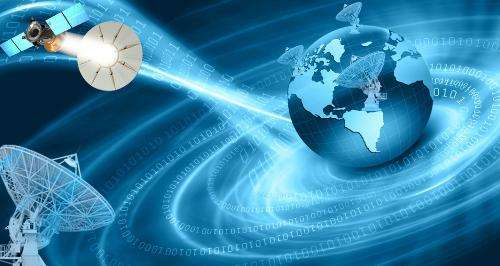中文简介:
测绘科学与技术是研究地球与其它实体及现象的时空相关信息采集、存储、处理、分析、管理、传输、表达、分发和应用的科学与技术。测绘学科充分发挥在GIS基础平台研究与开发、GIS体系架构设计、空间数据库、数字地学模拟与成矿预测、遥感工程应用技术、Web服务、地学高性能计算等领域的技术优势与研发实力。教育部第四轮全国学科评估结果为B档,位居参评学科的前30%。
测绘科学与技术一级学科共有教师59人,其中正高14人,副高33人。1996年获批遥感地质硕士点,1997年获批地图制图学与地理信息工程二级学科博士点,1998年获批摄影测量与遥感、大地测量学与测量工程2个二级学科硕士点,2010年获批测绘科学与技术一级学科博士点,2009年获批博士后流动站,2013年被评为为湖北省重点学科。2013年国家地理信息系统工程技术研究中心获批立项,研发了国际领先的自主可控地理信息系统支撑软件,在国内地理信息基础研究和工程化应用领域一直名列前茅,特别是在空中、地表、地下的全空间一体化三维GIS研究与应用。测绘学科特色方向主要包括以下四个方向:
(1)大地测量学与精密工程测量。
研究地球及其邻近星体的形状和外部重力场及其随时间变化规律的科学,以及应用卫星、航空和地面测量传感器对空间点位置进行精密测定、对城市和工程建设,以及资源环境的规划设计进行施工放样测量并进行变形监测的技术。。
(2)摄影测量与资源环境遥感。
利用航天、航空和地面传感器对地球表面及环境、其他目标及过程获取成像或非成像的信息,并进行记录、量测、解译、表达与应用的科学与技术。。
(3)地图制图学与地理信息工程。
设计与制作地图,开发与建立地理信息系统的理论、方法和技术。它根据应用需要,研究如何用地图的形式科学地、抽象概括地反映自然和人类社会各种现象的空间分布、相互联系、空间关系及其动态变化,并对空间地理环境信息进行获取、智能抽象、储存、管理、分析、处理和可视化,建立相应的地理信息系统,以数字、图形和图像方式传输空间地理环境信息,为各种应用和地学分析提供地理环境信息平台,提供精确数字地图数据和空间地理环境信息及相关技术支持。
(4)导航定位与空间位置服务。
研究确定目标在统一时空基准下的位置、速度和时间等信息及关联关系,并利用这些信息提供位置相关服务的技术和方法。其应用涉及国家安全和社会经济的方方面面,在新一代信息技术及其战略性新兴产业中,具有举足轻重和不可或缺的地位,在智能武器、物联网、智慧地球、节能减排、救灾减灾等领域发挥着重要的基础性支撑作用。
summarized account
Surveying and mapping science and technology studies the collection, storage, processing, analysis, management, transmission, expression, distribution and application of spatial-temporal information related to the earth as well as the other entities and phenomena. The discipline of surveying and mapping gives full play to technical advantages and R&D capacities in various fields such as GIS basic platform research and development, GIS system architecture design, spatial database, digital geoscience simulation and metallogenic prediction, remote sensing engineering application technology, Web services, and geoscience high-performance computing. The discipline was graded B and ranked in the top 30% in the fourth round of national discipline assessment organized by the Ministry of Education.
Engaged in the first-level discipline of surveying and mapping science and technology, there are 59 teachers in total, including 14 with senior titles and 33 with senior vice titles. Master's degree program in remote sensing geology was approved in 1996. The doctoral program of the second-level discipline in cartography and geographic information engineering was approved in 1997. The two master's degree programs of the second-level disciplines in photogrammetry and remote sensing, and in geodesy and surveying engineering were approved in 1998. The doctoral program of the first-level discipline in surveying and mapping science and technology was approved in 2010, and its mobile post-doctoral station was qualified the year before. In the 2013, the discipline was evaluated as the key discipline of Hubei province, and the National Research Center of Geographic Information System Engineering Technology was approved and established. The research center has independently developed the domestic geographic information system support software, with international leading level. It has been ranked among the top in the basic research and engineering application of geographic information in China, especially in the research and application of three-dimensional integrated GIS in the air, ground and underground space. The discipline of surveying and mapping mainly include the following four characteristic subdisciplines.
(1) Geodesy and Precision Engineering Survey
In this subdiscipline, the shapes and external gravity fields of the earth and the neighboring stars are studied. The positions of the spatial points are precisely determined. Attention is also paid to the technologies of layout survey and deformation monitoring with municipal construction, and the planning of resources and environment.
(2) Photogrammetry and Remote Sensing of Resources and Environment
This subdiscipline employs the sensor from space, air and ground to obtain imaging or non-imaging information about the earth's surface and environment. It also refers to the science and technology of obtaining, recording, measuring, interpreting, expression and applications of the above information.
(3) Cartography and Geographic Information Engineering
This subdiscipline mainly focuses on design and manufacture of the maps, and also on the theory, method and technology of developing and establishing geographic information system. According to the requirements of the application, it studies how to scientifically, abstractly and broadly reflect the space distribution, interconnected, spatial relationships and its dynamic change of various phenomena in both nature and human society. Based on the acquisition, intelligent abstraction, storage, management, analysis, processing and visualization of spatial geographical information, the corresponding geographic information system are established. The information of spatial geographical environment is transmitted through digital, graphics and image.It not only provides a platform for various applications and geoscience analysis, but also provides accurate digital map data, spatial geographical information and related technical supports.
(4) Navigation, Positioning and Spatial Location Services
This subdiscipline is to determine the position, velocity and time of the objects, as well as their correlation, in a unified space-time reference, and to provide location related service with the above information. Its application involves various aspects of national security and social economy, playing a decisive and indispensable role in the new generation of information technology and its strategic emerging industries. It also plays an important fundamental supporting role in the fields of intelligent weapons, Internet of things, smart earth, energy saving, emission reduction, disaster relief and disaster reduction.
